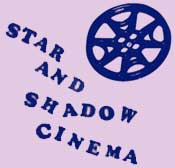The Beauty and The Beast (La Belle et La Bete)
Dir. Jean Cocteau, French with English subtitles, 1946
-
Sun 13 June 2010 // 19:30
/ Cinema
“One of the most spellbinding fairy tales in all cinema” (The Times), this is a landmark feat of cinematic fantasy, in which master filmmaker Jean Cocteau conjures spectacular visions of enchantment, desire and death that have never been equalled. Incredible designs, fascinating Beast, beautiful B&W photography - captivating and unforgettable.
PLOT
The film is based on an 18th century fairytale written by Jean-Marie Leprince de Beaumont.
Once upon a time, a man lived happily with his 3 daughters in a modest cottage. One day, he goes to the forest and gets lost in the night. He stumbles accross a mysterious property, in which a scary half-man/half-beast lives. The Beast aggrees not to kill hiom, only on the condition that the man brings one of his daughters back to live with him...
REVIEWS
"One of the most spellbinding fairy tales in all cinema" - THE TIMES
"Absolute magic, diamond cold and lunar bright" - THE OBSERVER
"One of the most magical of all films" - ROGER EBERT, CHICAGO SUNDAY TIMES
"The oft-tried but seldom-known accomplishment of telling a familiar fairy-tale with pure imagery and enchantment through the sensuous devices of the screen has been almost perfectly realized by the French poet-playwright, Jean Cocteau, in his beautifully measured French production of the old fable, "Beauty and the Beast." Except that it isn't in color, this film which came to the Bijou yesterday is an eminent model of cinema achievement in the realm of poetic fantasy." - THE NEW YORK TIMES, 1947
According to the Guardian, it is Cocteau's most poetic and dreamlike film, and also his most perfect - read more here
ABOUT
 This film is total pure magic, and the making of it is really impressive. Made without CGI, the effects are spectacular, and the general effect is soft, smooth, scary and mysterious like a tale coming straight from your imagination.
This film is total pure magic, and the making of it is really impressive. Made without CGI, the effects are spectacular, and the general effect is soft, smooth, scary and mysterious like a tale coming straight from your imagination.
DESIGNS
The set designs and cinematography were inspired by the paintings of Vermeer and the engravings of Gustave Dore.
Also, during the production of the film, Cocteau bought a Dore Statue of Perseus, Andromeda and the dragon. "Under its signs I made my film" cocteau said. "It sums up the picture and explains it...The influence of an object on our subconscious is greater than we think".
THE MUSIC
At first, the music composed by Georges Auric surprised the crew: in some scenes, it complements the images, but in others, it seems unrelated to what is happening on the screen. There is also space for strange silences that are suddenly interrupted by sudden bursts of orchestral sound.
Cocteau quickly overcame his discomfort with the music, however, after an enthusiastic screening to an audience of studio technicians, whome Cocteau called "people whose life work consists in preserving the 'blood of poets' in tin cans."
DIRECTOR: JEAN COCTEAU (1889 - 1963)
Jean Cocteau was one of the most scintillating and versatile figure in the 20th century French culture. Here are a few facts:
- Jean Cocteau was a very versatile artist: poet, playwright, novelist, painter, sculptor, scenarist, filr director, set designer, actor, critic, and sometime boxing manager
- In 1937 he met the actor Jean Marais, 24 years younger than him, and fell very much in love with him
- Jean Cocteau wrote many roles specifically for Jean Marais, in theatre plays and in films, among which The Beauty and The Beast (1946) and Orphee (1949).
WHAT HE SAID
"I firmly believe that a film worth making should be scripted, directed and edited, and possibly even produced by the same person, the createur complet as I like to call him."
"The movie screen is the true mirror refecting the flesh and blood of my dreams."
"History consists of truths which in the end turn into lies, while myth consists of lies which finally turn into truths."
TRAILER
